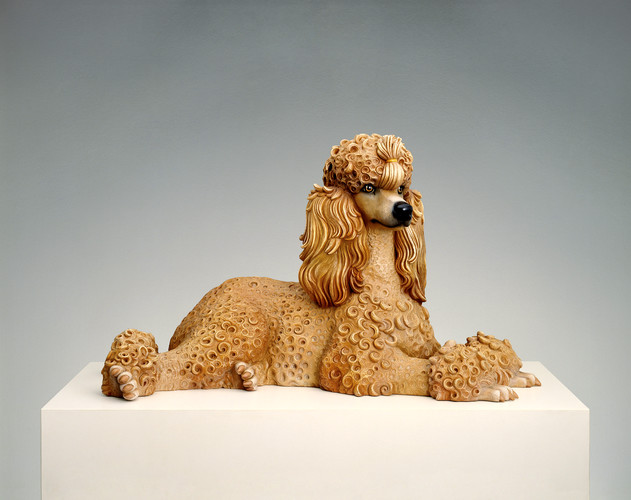

|
|
Photo courtesy Social Shutterbug
Jeff Koons, left, and Scott Rothkopf.
|
Architectural Record: How did you lay out the show?
Scott Rothkopf: Jeff and I met at least once a week for years. We had very large-scale models of the show in his studio that we’d work on, and I also had models in my office.
Was Jeff focused on the layout of the show?
I’ve worked with artists whose work is really about its relationship to space. I think Jeff tends to think more in terms of discrete objects and their scale in relation to the viewer, not so much about the physical container that the objects are in. So I became, in a sense, the mediator between the objects and the space.
So you were thinking about the architecture all along?
The Breuer building has been a point of departure for every show I’ve done here. I’ve studied the building—including looking at Breuer’s original wall designs—and thought a lot about it. In this case, it was a huge inspiration.
How so?
We’re used to seeing Jeff’s work in highly finished spaces. I always believed that the roughness of this building, the weight of this building, the variation of the floor, would make the work almost more brilliant. And having those 12-foot-10-inch ceilings brought a great sense of scale to the objects. I could go on for hours about how we worked with the building.
Can you give a few examples?
For one thing, we did a full demolition of every wall on the second, third, and fourth floors, which we don’t normally do, because we’re trying to reuse things. But I wanted you to feel the full dimensions of the building. I wanted to have the container, the outside walls of the building, pressing against the work. And I knew that I wanted all of the windows uncovered, to give a sense of the world beyond.
And did you think about the ceiling, with its famous coffered grid?
With a show this large, 27,000 square feet, the question of pacing is really important. I thought of the grid almost as a metronome, establishing the rhythm of the show. So we made the doors wider than usual, with no headers above—to keep the grid a continuous surface. From each room you feel the grid pulling you into the next one.
But I noticed that the walls you did put up never actually line up with Breuer’s coffers.
There’s a reason for that: because the thickness of the wall doesn’t match exactly the thickness of the coffers, you can never make the interface between your temporary drywall and the grid look elegant. So it’s often better to avoid the grid entirely.
With such a large show, how did you avoid monotony?
I wanted each room to offer a different experience. Not just the shape of the room but the way the objects are arranged within it. There’s a different logic playing out each time.
Are you involved in planning for the Whitney’s new building downtown?
By the time I arrived, the basic design of the building was complete, but I’ve been very involved, working with the chief curator, Donna De Salvo, and the director, Adam Weinberg, on things like the interior finishes, things that will give the spaces a certain character. Renzo’s team has been very responsive to what it is we’re doing curatorially.
Will the new building have the character of the old one?
The museums that have the most character are designed for more limited programs. If you look at the Beyeler or the Kimbell, most of the works shown there are of a similar scale; they take light in similar ways. We couldn’t do a biennial, which is so much more varied, in those spaces and have it look great.
So the Breuer building is limiting?
As much as the Breuer building is held up as a kind of paragon of flexibility, in some ways it’s not. If you need a 1,000-square-foot room with music, for a video, next to a 5,000-square-foot room for paintings, it’s difficult; you have to stuff foam in the ceiling. So it’s not as
flexible as you might think. But the Breuer building taught us a lot about how to make our new space even more truly flexible.
Are you sad to be moving?
I love the Breuer building; I’ve enjoyed making exhibitions here. I say that without any sense of internal conflict about our move. As terrific as the building is, the Whitney has outgrown it.

